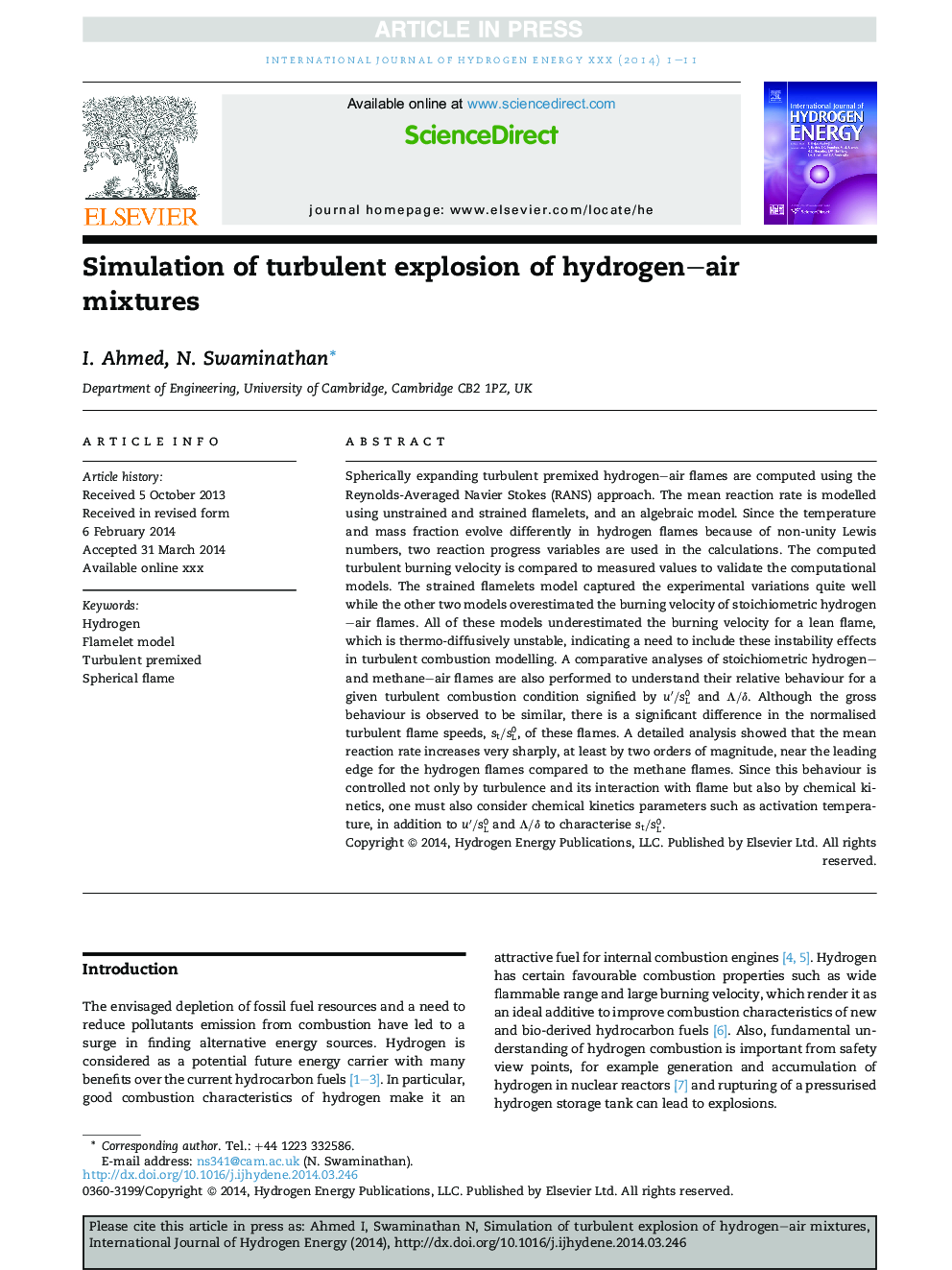| Article ID | Journal | Published Year | Pages | File Type |
|---|---|---|---|---|
| 7719282 | International Journal of Hydrogen Energy | 2014 | 11 Pages |
Abstract
Spherically expanding turbulent premixed hydrogen-air flames are computed using the Reynolds-Averaged Navier Stokes (RANS) approach. The mean reaction rate is modelled using unstrained and strained flamelets, and an algebraic model. Since the temperature and mass fraction evolve differently in hydrogen flames because of non-unity Lewis numbers, two reaction progress variables are used in the calculations. The computed turbulent burning velocity is compared to measured values to validate the computational models. The strained flamelets model captured the experimental variations quite well while the other two models overestimated the burning velocity of stoichiometric hydrogen-air flames. All of these models underestimated the burning velocity for a lean flame, which is thermo-diffusively unstable, indicating a need to include these instability effects in turbulent combustion modelling. A comparative analyses of stoichiometric hydrogen- and methane-air flames are also performed to understand their relative behaviour for a given turbulent combustion condition signified by uâ²/sL0 and Î/δ. Although the gross behaviour is observed to be similar, there is a significant difference in the normalised turbulent flame speeds, st/sL0, of these flames. A detailed analysis showed that the mean reaction rate increases very sharply, at least by two orders of magnitude, near the leading edge for the hydrogen flames compared to the methane flames. Since this behaviour is controlled not only by turbulence and its interaction with flame but also by chemical kinetics, one must also consider chemical kinetics parameters such as activation temperature, in addition to uâ²/sL0 and Î/δ to characterise st/sL0.
Related Topics
Physical Sciences and Engineering
Chemistry
Electrochemistry
Authors
I. Ahmed, N. Swaminathan,
